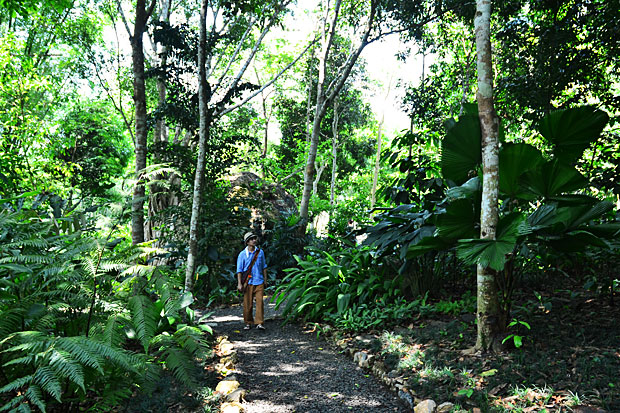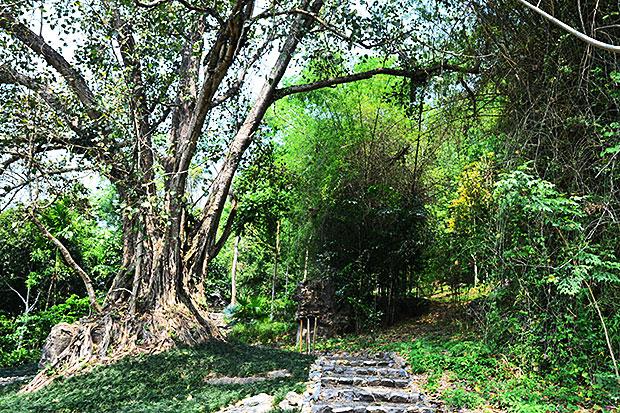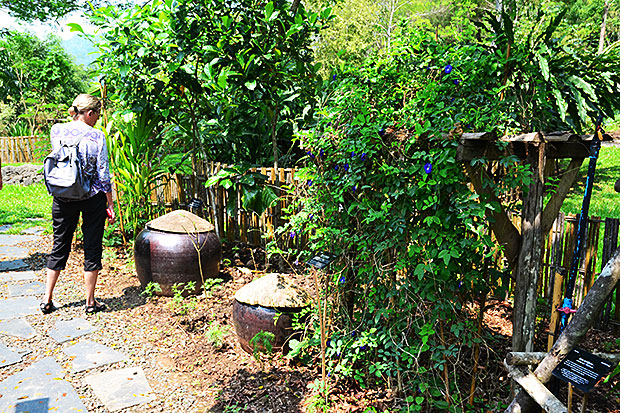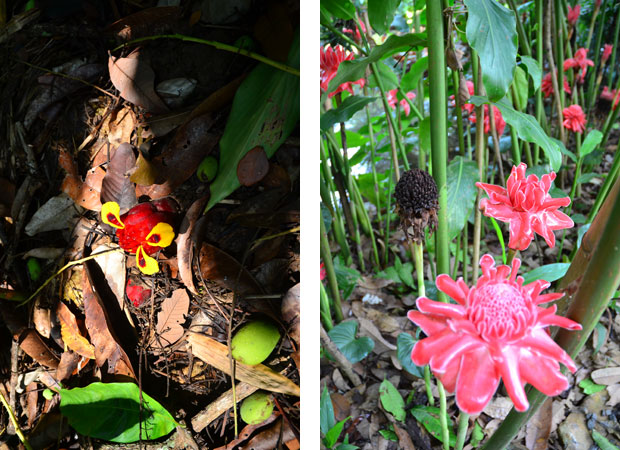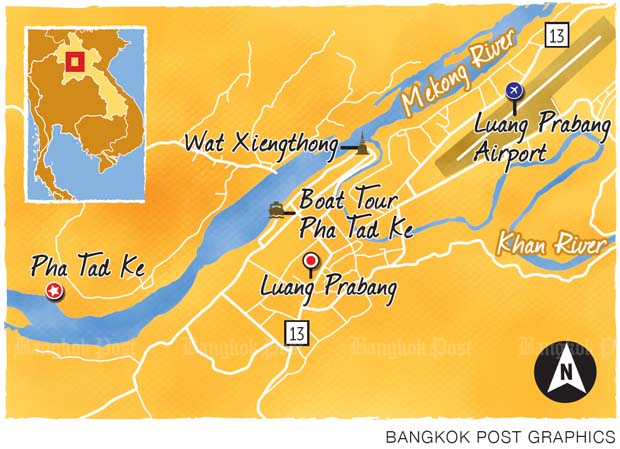The Flora Of Laos
Source: Bangkok Post
A botanical park in Luang Prabang reveals how plants are used in everyday life in Laos
Located on the west side of the Mekong River opposite the Lao heritage town Luang Prabang is Pha Tad Ke Botanical Garden. Opened around a year ago, the garden collects Lao plant species with the aim to conserve Laos’ rich biodiversity and traditional ethnobotanical knowledge. It showcases a series of ethnobotanical gardens as well as clusters of ginger, orchids, ferns, bamboo and palms around the base of the Pha Tad Ke cliff overlooking the river.
The garden excursion begins with a leisurely 15 minute boat ride down the Mekong. Visitors can first see a highlight — the 3,000m² ethnobotanical garden. Curated by academic Biba Vilayleck and presented under 10 themes, the garden showcases some of about 1,000 plants used by Lao in daily life — food plants, colouring (dye) plants, poisonous plants, ritual plants, and medicinal plants for people and elephants.
Visitors can see several small medicinal gardens here. Each of the gardens is devoted to a particular type of health issue — skin problems, arm and leg injuries, stomach trouble, digestive problems, and women’s-health concerns. For example, blood plants regulate menstruation and relieve menstrual pains. During pregnancy, it’s believed, women should take precautions and can avoid miscarriage with the help of plants such as Caesar weed or Urena lobata. The abundance and quality of breast milk can be controlled by plants with white sap such as papaya and a small euphorbia called nom rasasi. Sappan wood treats high blood pressure and is a body stimulant for women before and after childbirth. It heals wound infections and anaemia, and prevents foetal death. It is also for dyeing fibre.
Nearby is Ginger Garden, displaying over 100 species, including edible species, Luang Prabang species and an ornamental display around the pond. Seeking to conserve local ginger, a section of the ginger garden shows species found in Luang Prabang. Also on view is Curcuma flammea, discovered by Jana Leong Skornickova from the Singapore Botanic Garden in 2014, along with two other new species native to Laos.
Hundreds of ginger species are used in cooking — turmeric, ginger and galangal, to name a few. Some ginger flowers have traditionally and spiritually been used among people in Indochina. Those of Globba and Curcuma are offered to monks during Buddhist Lent in the rainy season. Some species, like the common ginger and Amomum and Alpinia, can be used as painkillers, to ward off parasites and mosquitoes, and to prevent malaria. Their essential oils have anti-inflammatory, antimicrobial and antioxidant properties.
Arboretum displays more than 200 species of major trees, with information about their local usage and natural habitats while Palm Garden has over 30 species of palm, including rattan trees, which can grow up to 200m long. And then there is the Bamboo Garden, with over 30 species of bamboo that serve as food and materials for different purposes, such as handicraft-making and construction.
Another must-see is the Limestone Habitat, featuring local plants from the limestone mountains of Laos, such as cycads and tree ferns. Limestone karsts have outstanding biodiversity and geology, and some plants and animals are unique to this kind of environment. Visitors can enjoy trekking for about 30 minutes at the base of the mountain to Pha Tad Ke Cave.
If visitors have more free time, they can also visit the Mist House, Orchid Nursery, Organic and Educational Garden, and Permaculture Demonstration Farm. The Mist House keeps orchids, ferns and carnivorous plants in a specially designed enclosed environment, while the Orchid Nursery shows more than 260 species of orchids and 150 species of fern, and offers a 10 minute talk about orchids. The Organic and Educational Garden provides knowledge of organic farming and food crops growing, and shows several crop-rotation beds, starch plants, herbs and compost. The Permaculture Demonstration Farm offers permaculture workshops for Lao farmers and tourists. The garden believes permaculture (a framework for creating sustainable ways of living) provides a way to help the 75% of Lao people living on small-hold farms to improve their livelihoods.
Apart from being a responsible tourism destination, the garden offers a range of tours, workshops and activities, such as garden and mountain tours and botanical drawing and photography workshops. It provides educational opportunities for children, students and local farms, organises regular field trips with local and international botanists and researchers, as well as cultural and artistic activities in the garden and elsewhere in Luang Prabang. It also publishes books and manuals in English, French and Lao and supports the local economy by selling local products at its shop. It reinvests all of its revenue in its own development, education and research. The work of the garden is supported by several non-profit associations.
After a long walk in and around the garden, visitors may feel thirsty and hungry and want to relax at the garden’s café by a pond. Recommended dishes include mieng (betel leaf wrap with rice filling), pomelo salad with fish, and red curry with sweet pumpkin and pork.
Travel Info
-
The garden is open daily except Wednesdays, 8am-6pm. To get there, visitors can take a boat from the garden’s downtown reception at Ban Wat That to the garden. The boat departs the nearby pier hourly starting at 9am and returns to the town until 5.30pm. The boat ride is included in the excursion ticket priced at US$25 (800 baht) for adults. Admission as well as the boat trip is free for children aged under 12.
- Visit www.pha-tad-ke.com or email bookings@pha-tad-ke.com

